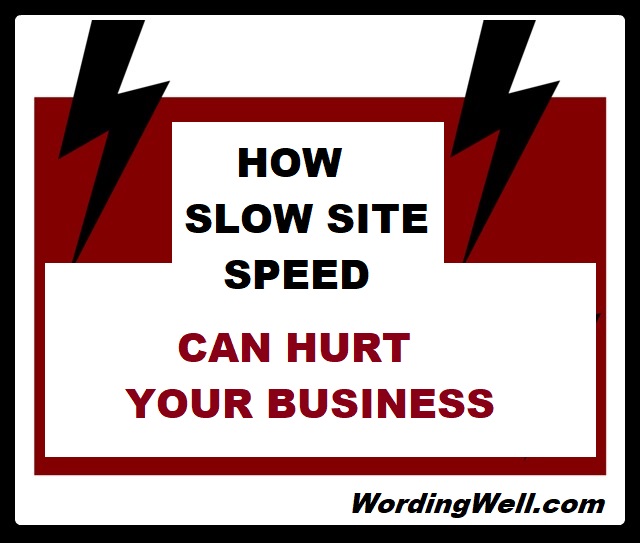Last Updated on: January 2nd, 2021

Slow site speed can affect your customer engagement, your bounce rate, and your sales.
To elaborate on this, I have invited Nick Galov from Hosting Tribunal to share some really important information with you.
Take it away, Nick!
How can you improve customer engagement?
This is one question that troubles bloggers and online marketers the most – and perhaps understandably so.
Customer engagement is crucial to success for any blog site or e-store, but improving it is one tough task. This is mainly because there are several factors that can affect customer engagement, and it is often easy to miss the one that influences it most.
While content quality, site design, and interactive media all help improve your blog’s or online store’s appeal (and you should pay attention to them), they don’t affect customer engagement as much as site speed.
When you think of it, this is hardly surprising.
Today’s online users have little patience, and if there’s one thing they want more than anything else, it is access to information quickly. If a site is slow to load, they will quickly jump to another site that can provide them the necessary information, even if the former has better content or site design.
Statistics, too, point in this direction. Did you know that Hosting Tribunal reports some stupefying statistics?
1: The bounce rate probability jumps by 106% if your page load time increases from 1 second to 6 seconds
2: The bounce rate probability soars by a whopping 123% if page load time is 10 seconds
Slow Site Speed Affects Bounce Rates
Bounce rate refers to the percentage of your total site visitors who leave your site after viewing the first page for a few seconds before navigating away. Needless to say, if a high percentage of your visitors are choosing to not spend much time on your site, you’ll struggle to improve customer engagement.
And it is not only viewers who don’t like slow sites. Google, too, might have an aversion to snail-paced websites. While slow speed might not affect your search results page ranking directly, it can still reduce the efficacy of your SEO efforts.
The impact of slow speed is even more on online stores. Research shows 79% of online shoppers don’t want to buy from a site again if the site’s performance was below their expectations.
How else does site speed affect e-commerce?
Have a look at this interesting infographic which contains loads of information regarding how page load time impacts e-commerce.
Infographic URL: https://hostingtribunal.com/blog/how-speed-affects-website/
How Can You Improve Your Site Speed?
Slow site speed can be improved in many ways.
Here is a great article that will help you speed up your site.
It gives you 6 tips on how to improve your website speed.

Take Action and Improve Your Site Speed Today!
It’s a hard task but if you improve your site speed, you will increase customer engagement, reduce your bounce rate, and earn more money.
Plus, you will have a website you can be proud of!
Now, go and improve your site speed today!


Thank you so much for your post. Keep sharing
You’re welcome. I will!
Cool infographics you’ve got here. Having a slow loading site can truly hurt your business and it’s great that you have fully showcased those issues in this infographics.
Al Gomez recently posted…7 Advanced SEO Techniques for an Awesome Start to 2019
Al, you’re right. Site speed matters!
Thank you for the compliment on the infographic, but I didn’t create it. I just posted it. 😉
Hi Lorraine,
Extra-ordinary infographic. Nice and detailed depiction. Yes, obviously the online users won’t wait till your page loading if it is slow. And also, the growing competition is another reason. If they don’t have plenty of choices, they may wait and watch. But, the market is not so. If one cannot, then others can fill the space. Great article! Thanks.
Arumugam Rangasamy recently posted…WP Super Cache vs W3 Total Super Cache – Solid Reasons
Arumugam, I like that infographic, too. It contains a lot of great information about why site speed is so important.
You made some good points in your comment. Thanks for that!
Good infografics. Did you design them with Canva?
I don’t know who designed it. But you can use Canva to design them! In fact, Canva is one of the tools listed here AND there is a tutorial on how to use Canva to design them! The Ultimate Guide to Infographics (Includes 10 Tools + 5 Tutorials!)
Hi Lorraine,
No one wants to waste time visiting a site that takes forever to load. It is always good to optimize the site in every possible way to improve not just the content quality but also the user experience. A slow site hurt user experience and people fallback.
It is essential to optimize the site speed, get rid of render blocking scripts, minify codes, etc.
In short, you must do everything which is necessary to create the excellent user experience.
Glad you have shared this.
Gaurav Kumar recently posted…Eagle Eye Concept for Bloggers and SEO: Everything You Need to Know About Eagle Eye Rule
Gaurav, slow site speeds are awful for everyone, I agree!
We want to make the user experience as pleasurable as possible, and we can start by having a faster site speed.
Of course, there are other factors that contribute to a good user experience, such as ease of navigation, visible sharing buttons, good content, etc.
Thanks for bringing this up!
Awesome share! I am glad to gain this remarkable information from you. All the details you provide to us, it was very helpful and useful. Thanks for sharing this amazing post.
Thanks!